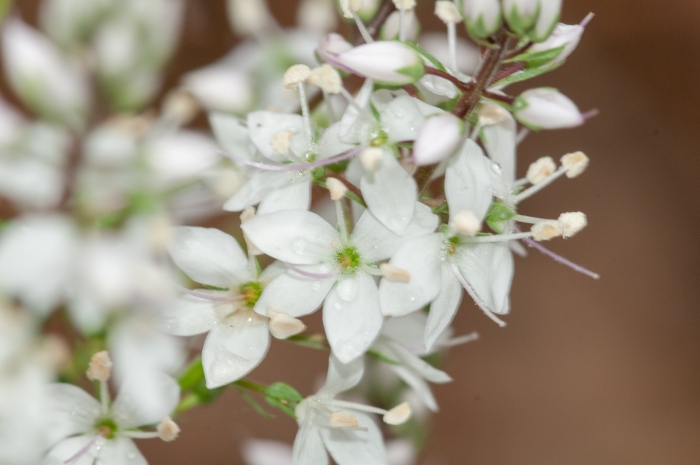Derwent Speedwell
(Veronica derwentiana)
Derwent Speedwell (Veronica derwentiana)
/
/

Rolf Lawrenz
CC BY 4.0
Image By:
Rolf Lawrenz
Recorded By:
Copyright:
CC BY 4.0
Copyright Notice:
Photo by: Rolf Lawrenz | License Type: CC BY 4.0 | License URL: http://creativecommons.org/licenses/by/4.0/ | Rights Holder: Rolf Lawrenz | Publisher: iNaturalist | Date Created: 2023-11-14T11:01:58-08:00 |

























Estimated Native Range
Summary
Veronica derwentiana, commonly known as Derwent Speedwell, is a perennial herb that is native to a variety of habitats in southeastern Australia, including Tasmania, Victoria, New South Wales, Queensland, and South Australia. It thrives in eucalypt forests, alpine herb fields, and often colonizes disturbed sites such as roadsides and cleared areas. Derwent Speedwell typically reaches up to 55 inches in height and features toothed leaves. Its flowers, which can be white or pale blue, are arranged in terminal sprays and bloom in the spring and summer, adding a delicate touch to the plant’s overall smooth or slightly hairy appearance.
Derwent Speedwell is valued for its attractive flowers and adaptability to different garden settings. It can be used as a border plant or in wildflower gardens, where its flowers attract pollinators. It prefers well-drained soils and can tolerate a range of light conditions from full sun to part shade. While it is not known for any significant horticultural problems, it may require protection from slugs and snails, which can damage young plants. This species is also recognized for its five subspecies, which are accepted by the Australian Plant Census, reflecting its genetic diversity within its native range.CC BY-SA 4.0
Derwent Speedwell is valued for its attractive flowers and adaptability to different garden settings. It can be used as a border plant or in wildflower gardens, where its flowers attract pollinators. It prefers well-drained soils and can tolerate a range of light conditions from full sun to part shade. While it is not known for any significant horticultural problems, it may require protection from slugs and snails, which can damage young plants. This species is also recognized for its five subspecies, which are accepted by the Australian Plant Census, reflecting its genetic diversity within its native range.CC BY-SA 4.0
Plant Description
- Plant Type: Herb
- Height: 1-2 feet
- Width: 1-2 feet
- Growth Rate: Moderate
- Flower Color: Blue
- Flowering Season: Spring
- Leaf Retention: Deciduous
Growth Requirements
- Sun: Full Sun, Part Shade
- Water: Medium
- Drainage: Medium, Fast
Common Uses
Border Plant, Groundcover, Low Maintenance, Rock Garden
Natural Habitat
Native to eucalypt forests, alpine herb fields, and disturbed sites in southeastern Australia
Other Names
Common Names:
Scientific Names: , Veronica derwentiana, Veronica derwentia,
GBIF Accepted Name: